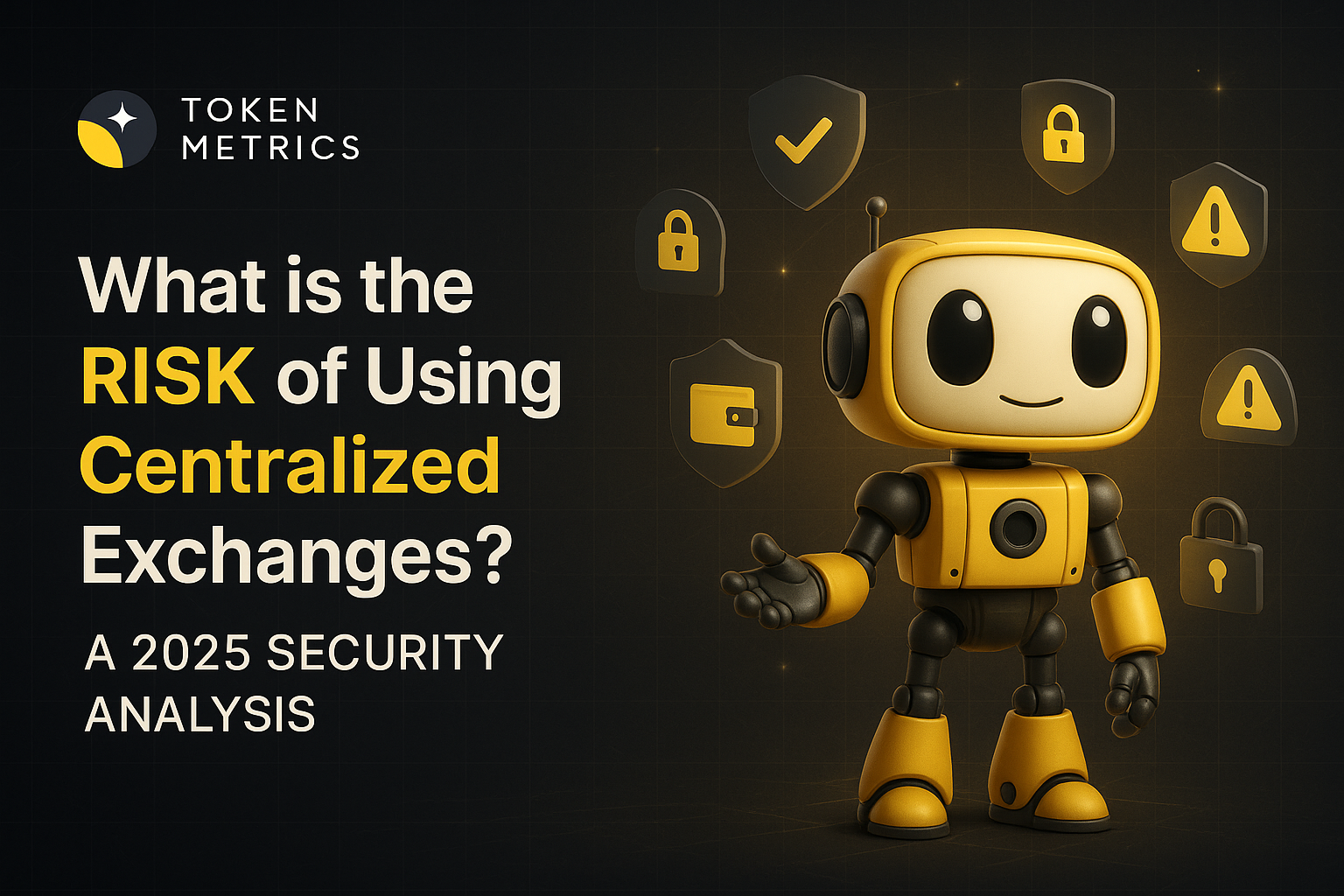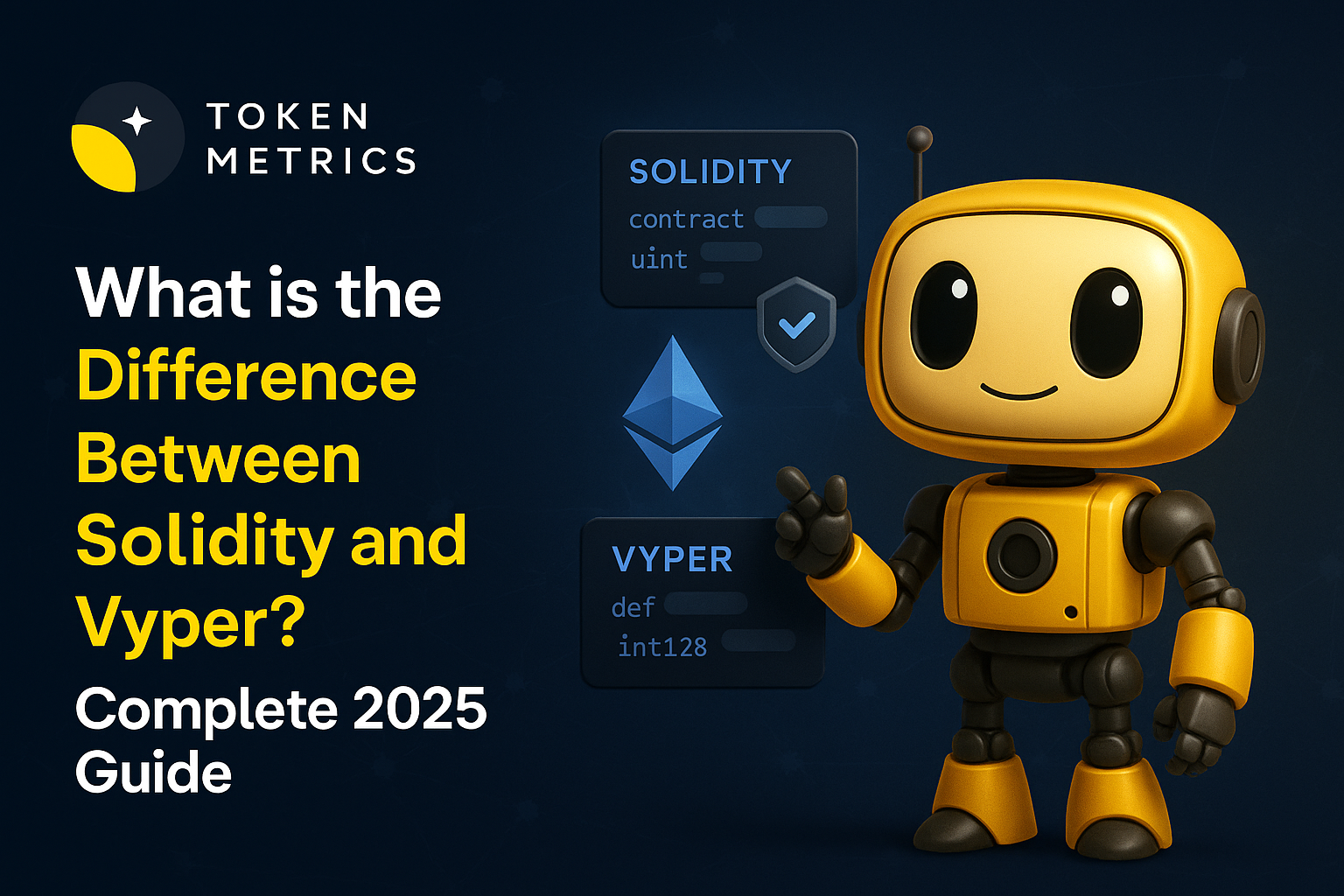What is the Risk of Using Centralized Exchanges? A 2025 Security Analysis

Centralized cryptocurrency exchanges serve as the primary gateway to digital assets for millions of investors worldwide. As of 2025, there are over 560 million cryptocurrency owners globally, and the vast majority rely on centralized exchanges to buy, sell, and trade their crypto assets. These platforms offer user-friendly interfaces, high liquidity, and the convenience of fiat currency integration, making them essential hubs in the crypto space. A centralized crypto exchange acts as an intermediary, facilitating cryptocurrency trading, liquidity, and compliance between buyers and sellers. More broadly, a crypto exchange is any platform that enables the trading of digital assets, with most users depending on centralized versions for their trading needs. However, the question remains: what is the risk of using centralized exchanges? With over $2.47 billion stolen from cryptocurrency services in just the first half of 2025—already surpassing total losses from 2024—the risks are significant and demand careful attention from every crypto participant.
Introduction to Centralized Cryptocurrency Exchanges
Centralized cryptocurrency exchanges (CEXs) are the backbone of the digital asset marketplace, serving as the primary venues where users can buy, sell, and trade digital assets. Unlike decentralized platforms, centralized exchanges typically operate under the management of a single company or organization, which oversees all trading operations and user accounts. These platforms act as trusted intermediaries, matching buyers and sellers, executing trades, and ensuring that transactions are processed efficiently and securely.
Centralized cryptocurrency exchanges have become essential for both new and experienced traders, offering a streamlined and user-friendly environment for cryptocurrency trading. By providing access to a wide range of digital assets and advanced trading features, centralized exchanges make it easy for users to participate in the crypto market. Their centralized control allows for faster transaction processing, customer support, and the implementation of robust security protocols, making them the go-to choice for those looking to trade digital assets with confidence.
The Custodial Risk: Your Keys, Their Control
At the core of the risks associated with centralized cryptocurrency exchanges lies their custodial model. When users deposit funds on these platforms, they hand over control of their private keys to the exchange. This means that the exchange, not the user, holds the cryptographic keys that grant access to the digital assets. The popular phrase “not your keys, not your coins” encapsulates this fundamental limitation.
Centralized exchanges typically operate by managing user assets on their behalf, creating a single point of failure. Unlike traditional banks, cryptocurrency holdings on these platforms are not insured by government agencies such as the FDIC. Consequently, if an exchange faces insolvency, suffers a security breach, or engages in mismanagement, users risk losing their entire holdings without any guaranteed recovery. Because centralized exchanges use a custodial model, they have direct control over users’ funds, which increases the risk of loss in the event of insolvency or security incidents.
The collapse of FTX in 2022 illustrated the catastrophic consequences of custodial risk on an unprecedented scale. But it was far from an isolated case; throughout crypto history, numerous centralized platforms have failed, resulting in billions of dollars in lost user funds. This custodial risk remains the single most significant danger of relying on centralized platforms for cryptocurrency trading and storage.
Security Breaches: An Escalating Threat
Security breaches continue to escalate both in frequency and sophistication, posing a grave threat to centralized cryptocurrency exchanges. These platforms face a wide range of security threats, including cybersecurity vulnerabilities, hacking risks, and custodial risks associated with centralized control over private keys. The year 2025 has been particularly alarming. The Bybit breach in February 2025 marked the largest single theft in crypto history, with hackers stealing $1.4 billion worth of Ethereum within minutes. This single event accounts for approximately 69% of all stolen funds from crypto services in the first half of the year.
Other major incidents followed. In July 2025, CoinDCX, one of India’s largest centralized crypto exchanges, suffered a $44.2 million breach linked to compromised employee credentials. That same month, WOO X lost $14 million due to a sophisticated phishing attack targeting a team member’s device. August alone saw 16 major exploits causing losses totaling $163 million, a 15% increase from the previous month.
Since 2012, over $3.45 billion has been lost across more than 48 major exchange hacks. The leading cause remains unauthorized access to hot wallets, which accounts for nearly 30% of losses. Other vulnerabilities include compromised systems and servers, insider threats, and protocol weaknesses.
North Korean state-sponsored hackers have emerged as particularly prolific threat actors, responsible for stealing over $2 billion in cryptocurrency by October 2025—nearly triple their 2024 total. These attacks often leverage advanced social engineering tactics, including infiltrating crypto exchanges through compromised IT personnel.
Even large, well-funded platforms with robust security measures are not immune. For example, Coinbase experienced a cyberattack in May 2025 that exposed customer information, underscoring the persistent security vulnerabilities facing centralized exchanges. Enhancing security measures within centralized exchanges is crucial to mitigate these ongoing threats, protect user assets, and maintain regulatory compliance.
Insider Threats and Operational Failures
Not all risks arise from external attackers. Insider threats have become an increasing concern for centralized exchanges. In 2025, poor internal access controls contributed to unauthorized employee access in 11% of exchange hacks. Weak API security was implicated in 27% of breaches, allowing attackers to bypass authentication protocols.
Incidents like the BtcTurk breach in August 2025 and the earlier CoinDCX hack involved insider access either through credential compromise or malicious intent. These cases highlight the importance of robust human resource practices, strict internal security controls, and regular security audits to mitigate insider threats.
Operational failures compound these risks. System outages, software bugs, and maintenance downtimes can prevent users from accessing their accounts or from being able to execute trades during critical market moments. The inability to execute trades at the right time can result in missed opportunities or losses, especially when market timing is essential. During periods of high volatility, centralized exchanges may also face liquidity constraints, leading to increased trading fees and delays precisely when reliable access is most needed.
Regulatory and Compliance Risks
Such regulatory scrutiny adds uncertainty and operational challenges for users of centralized platforms, potentially exposing them to financial risk beyond market volatility. Regulatory risks, including sudden changes in legal requirements and compliance mandates, can disrupt user access and platform operations.
Privacy and Data Security Concerns
Centralized exchanges collect and store vast amounts of user data, including identity documents and transaction histories, to comply with regulatory requirements. This concentration of sensitive information makes these platforms attractive targets not only for financial theft but also for identity theft and surveillance.
In 2025, unencrypted user data accounted for 17% of crypto data breaches, exposing users to identity theft and significant financial losses. Outdated security practices, such as reliance on SMS-based two-factor authentication, contributed to a 32% rise in account takeovers. To address these risks, exchanges must implement security best practices to protect user data and prevent unauthorized access.
Moreover, centralized exchanges may share user data with governments and regulatory bodies, potentially exposing transaction patterns and holdings. For users who value financial privacy, this represents a fundamental compromise of cryptocurrency’s original promise of anonymity and financial freedom.
Fiat Currency and Payment Gateways: Bridging Two Worlds
A major advantage of centralized cryptocurrency exchanges is their ability to bridge the gap between traditional finance and the crypto world. These platforms support fiat currency transactions, allowing users to deposit and withdraw government-issued money such as US dollars, euros, or yen. Through integrated payment gateways, centralized exchanges connect seamlessly with banks and other financial institutions, making it easy for users to fund their accounts and start trading digital assets.
This fiat currency support is a key factor in attracting a broader audience, including those new to cryptocurrency trading. By enabling direct purchases of digital assets with fiat currencies, centralized exchanges lower the barrier to entry and simplify the onboarding process. However, this convenience comes with added responsibilities. To comply with anti money laundering (AML) and know your customer (KYC) regulations, centralized cryptocurrency exchanges must verify user identities and monitor transactions, ensuring that their platforms remain secure and compliant with global financial standards.
Margin Trading and Leverage: Amplified Risks
Many centralized cryptocurrency exchanges offer margin trading, a feature that allows users to borrow funds and trade with leverage. This means traders can open larger positions than their account balance would normally permit, potentially increasing their profits if the market moves in their favor. However, margin trading also magnifies the risks—if the market turns against the trader, losses can quickly exceed the initial investment, leading to significant financial losses.
To protect user funds and maintain platform integrity, centralized exchanges that support margin trading must implement robust security measures and risk management protocols. This includes real-time monitoring of trading activity, automatic liquidation mechanisms, and strict collateral requirements. Despite these safeguards, operational failures or sudden market volatility can still result in rapid losses for users. As such, anyone considering margin trading on a centralized cryptocurrency exchange should fully understand the risks involved and use leverage cautiously.
Staking and Lending: New Frontiers, New Vulnerabilities
Centralized exchanges are continually evolving, now offering innovative services like staking and lending to meet growing market demand. Staking allows users to earn rewards by participating in the validation of blockchain transactions, while lending enables users to earn interest by providing their digital assets to others through the platform. These features make it easier for users to generate passive income without leaving the exchange.
However, staking and lending introduce new vulnerabilities to centralized exchanges. The use of smart contracts to automate these processes can expose user funds to potential exploits or bugs. Additionally, the centralized management of these services means that users must trust the exchange to implement enhanced security measures, such as regular security audits and comprehensive identity verification protocols. By prioritizing these security practices, centralized exchanges can help protect user funds and maintain trust as they expand into these new frontiers.
Geographical Restrictions and Supported Cryptocurrencies
Centralized cryptocurrency exchanges often face regulatory requirements that compel them to impose geographical restrictions on their services. Depending on local laws and regulations, users in certain countries may find themselves unable to access specific features, trade certain digital assets, or even create accounts on some platforms. Additionally, each exchange decides which cryptocurrencies to support, which can limit the trading options available to users.
To navigate these limitations, users should carefully review the terms and conditions of any centralized cryptocurrency exchange they consider using, as well as stay informed about the regulatory environment in their jurisdiction. Understanding these restrictions is crucial for managing digital assets effectively and avoiding unexpected service interruptions. In contrast, decentralized platforms offer a more open and accessible alternative, allowing users to trade digital assets globally without the need for intermediaries or geographical constraints.
Dependency and Limited Control
Using centralized exchanges inherently means accepting limited user control over one’s own assets. These platforms impose withdrawal limits, transaction restrictions, and delays that can restrict access to funds at critical times. Centralized exchanges may also impose restrictions on withdrawals or transfers, especially during periods of high demand or regulatory scrutiny. During market stress or liquidity shortages, such controls often tighten, leaving users locked out when they most need access.
Additionally, centralized control of trading operations creates opportunities for market manipulation. Since exchanges manage order books and matching engines, they can engage in practices like front-running or wash trading, which disadvantage ordinary users. Such platforms also have the potential for operational controls and manipulation. Service availability depends entirely on the exchange’s infrastructure and operational stability. Technical issues or deliberate manipulation can result in outages, preventing users from executing trades or withdrawing funds during volatile market conditions.
The Critical Role of Analytics in Risk Management
Given the inherent risks of centralized exchanges, sophisticated analytics and monitoring are essential tools for users seeking to protect their investments. Platforms like Token Metrics, an AI-powered crypto trading and analytics service, provide crucial intelligence for navigating these challenges.
While no platform can eliminate exchange risks entirely, Token Metrics offers real-time market intelligence and risk monitoring that help users identify potential problems before they escalate. It is important to choose a reliable platform with established infrastructure and robust security measures to ensure a smooth and secure trading experience.
Its AI-driven analysis tracks exchange reliability, monitors security incidents, and issues early warnings when platforms show signs of distress. For active traders, Token Metrics provides automated trading bots and customizable alerts to execute exit strategies if risk indicators reach concerning levels. This automation is invaluable during periods of market stress when exchange outages or rapid withdrawals become necessary.
Comprehensive portfolio management tools enable users to track holdings across multiple exchanges, reducing custodial risk by diversifying exposure. Since launching integrated trading capabilities in March 2025, Token Metrics offers an end-to-end solution that minimizes time funds spend on exchanges. The platform’s sentiment analysis tools monitor social media and news for early indicators of exchange problems, providing users with an information advantage critical for protecting their assets.
Mitigation Strategies: Reducing Your Exposure
While the risks of centralized exchanges are substantial, users can take proactive steps to mitigate them:
- Minimize Exchange Balances: Keep only the funds necessary for immediate trading on exchanges. Store larger holdings in personal wallets where you control the private keys, such as hardware wallets.
- Diversify Exchange Usage: Avoid concentrating all assets on a single platform. Spreading funds across multiple reputable exchanges limits single points of failure.
- Enable Maximum Security: Use hardware security keys for two-factor authentication instead of vulnerable SMS methods. Activate withdrawal whitelists and all available security features.
- Research Exchange Reputation: Evaluate security records, insurance policies, proof-of-reserves disclosures, and regulatory compliance before depositing significant funds.
- Monitor Continuously: Stay informed about security incidents and operational issues. Analytical platforms like Token Metrics provide essential ongoing monitoring.
- Plan Exit Strategies: Establish thresholds for withdrawing funds if an exchange exhibits unusual withdrawal delays, suspicious activity, or regulatory problems.
- Separate Trading from Storage: Use centralized exchanges primarily for trading and liquidity access. Rely on cold storage solutions for long-term asset custody. Consider decentralized alternatives, which empower users to retain control over their private keys and reduce reliance on centralized platforms.
The Ethereum Exodus: A Telling Trend
A clear indicator of growing risk awareness is the dramatic reduction of cryptocurrency held on centralized exchanges. As of March 2025, the amount of Ethereum on centralized platforms dropped to historic lows not seen since November 2015, with only 8.97 million ETH remaining.
This migration away from exchange custody reflects investors’ increasing preference to transfer reserves into private wallets or cold storage solutions. It highlights a market-wide recognition that, despite their convenience, centralized exchanges carry unacceptable long-term storage risks.
Decentralized exchanges (DEXs) and decentralized systems have emerged as alternatives to centralized custody, empowering users with self-custody and direct control over their private keys. Unlike centralized platforms, decentralized exchanges operate without a central authority, relying on blockchain smart contracts to facilitate peer-to-peer trading. These decentralized systems enhance security and ownership by reducing reliance on third parties. Additionally, decentralized exchanges often utilize liquidity pools to provide trading liquidity and enable seamless peer-to-peer transactions, further supporting a permissionless and transparent trading environment.
The Verdict: Convenience vs. Control
Centralized cryptocurrency exchanges offer undeniable benefits: user-friendly interfaces, high liquidity, fiat currency on-ramps, customer support, and advanced trading features like margin trading. These advantages make them indispensable infrastructure for cryptocurrency adoption and accessibility. Centralized crypto exchange development has focused on providing high trading volume, accurate market prices, and features that attract professional traders. High trading volumes and robust infrastructure are key factors for professional traders seeking efficient execution.
However, the risks are equally undeniable. Frequent security breaches, custodial vulnerabilities, regulatory uncertainties, privacy concerns, and limited user control expose users to significant financial and operational risks. In contrast, decentralized exchanges rely on smart contracts, and writing smart contracts is a critical skill for developers building these alternatives.
The answer to what is the risk of using centralized exchanges is not to avoid them entirely but to approach their use with clear-eyed awareness. Use centralized exchanges for their strengths—trading, liquidity, and market access—but recognize the inherent custodial risk of entrusting third parties with your crypto assets.
Leveraging analytical platforms such as Token Metrics, minimizing exchange exposure, diversifying across platforms, and employing robust security practices are essential strategies for navigating this landscape safely.
In 2025, as threats escalate and losses mount, understanding and managing the tension between convenience and control is the price of participation in today’s crypto markets. Only through informed risk mitigation can users fully harness the benefits of centralized exchanges while protecting their valuable cryptocurrency assets.
Create Your Free Token Metrics Account

.png)




%201.svg)
%201.svg)


%201.svg)










.svg)




.png)